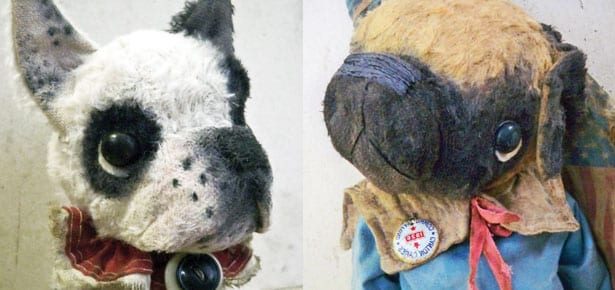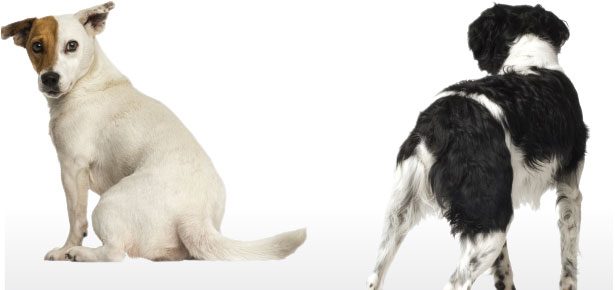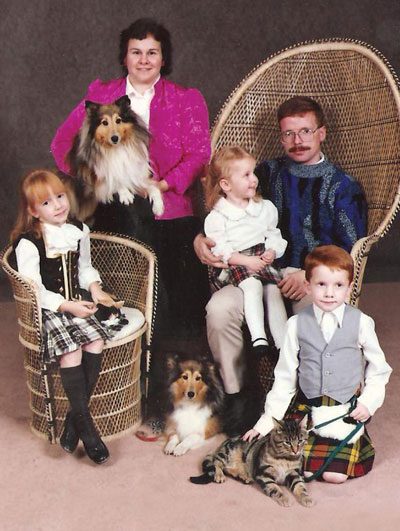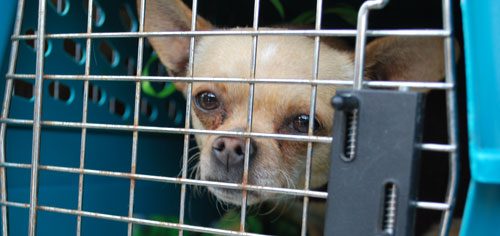
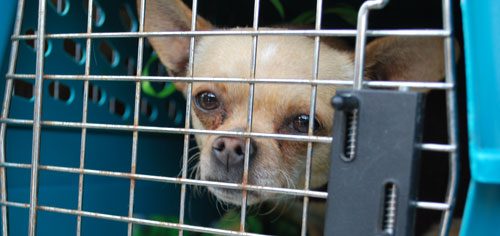
From California, With Love
The situation in California is desperate. By some estimates, hundreds, if not thousands, of dogs are euthanized weekly, many abandoned due to the effects of the economy there. Many dogs are healthy; some a bit worse for wear. Brenda Barnette, LA city shelter head, encourages volunteers to find ways to get the dogs from the shelters into homes.
MamaDog didn’t have a hope in hell. The Shepherd-cross was being surrendered to one of the six Los Angeles City shelters. She was led in on a piece of rope, still lactating from a recent birth. Her hip bones stuck out far enough to indicate severe hunger. The folks surrendering her said they didn’t know whether or not she would be good with kids, so the shelter staff relegated her to an isolation building, where dogs are never seen by the public and have zero hope of adoption.
“She was probably one of the saddest-looking dogs I’d ever seen,” says Diane Valine, an LA city shelter worker who volunteers to rescue dogs from California and transport them to rescue groups in other areas, including A Better Life Dog Rescue (ABL) near Vancouver. She called Jan Olson, founder of ABL, who said: “Send the dog here.”
“They found her a good home and, on Christmas Day, her new parents took her on the ferry to Vancouver Island and she got to run on the beach. MamaDog went from hell to heaven,” says Valine.
The situation in California is desperate. By some estimates, hundreds, if not thousands, of dogs are euthanized weekly, many abandoned due to the effects of the economy there. Many dogs are healthy; some a bit worse for wear. Brenda Barnette, LA city shelter head, encourages volunteers to find ways to get the dogs from the shelters into homes, and Valine now works with Olson and ABL to transport dogs about every six weeks. These are dogs, Valine says, that would surely be euthanized due to overcrowding. She chooses very adoptable dogs that have been in the shelter a while, so their time is running out, but says when she finds a particularly needy case and tells ABL about it, they always say, “send it along.”
When I heard about this California connection, I called ABL. Soon, I was committed to being part of a very special convoy that will be the literal difference between life and death for a truckload of dogs.
Monday, February 28, 2011
8:36 Crossing the border is easy and fast. The guard only wants to know what we will be doing and how long we will be gone. Pointing to the eight empty cages we brought with us to transport the dogs, we say we are volunteers and within minutes, we are on Interstate 5. Past Bellingham, it starts to snow. At home, when it snows, I would cancel my appointments and stay inside, afraid to drive, yet there isn’t a bone in my body that wants to go back home. There are 30 dogs who have made it this far and I owe it to them to drive through my fear and bring them home.
9:16 We arrive at exit 232 and pull into the parking lot of the Fairfield Marriott. Olson and another volunteer park their vans and we check the number of cages to see how many dogs will need to double up. Olson explains that once the dogs arrive they’ll need water, a pee break, and to stretch their legs, but we can only bring out three dogs at any given time in order to maintain control and safety.
Olson, an airline pilot (the seventh female pilot ever hired by Air Canada, she says), started ABL as a private charitable organization in 2006.
“I had a career, marriage, no kids, and I wanted to do something important,” she says. “From foster to forever has taken as short as three hours to as long as 18 months. All our dogs are in foster or permanent homes; we don’t have a shelter.”
ABL saves dogs from within British Columbia, but also helps with smaller dogs from California, as these smaller dogs have an easier time finding homes in Canada. So far, ABL has placed 800 dogs.
10:38 I can barely contain myself as the large white transport van arrives. My heart wants to grab all the dogs and take them home, but I can’t, of course. All the dogs have been spoken for, either by permanent forever homes or by very capable and loving foster homes.
The 30 in the van range from a tiny puppy, just weeks old, to nine large-breed dogs, but most of the rescuees are—or resemble—Chihuahuas. The dog cages are piled high and to me, the dogs look sad and tired. I think about what their lives have been like: each stuck in a kennel at an overcrowded shelter, most abandoned or surrendered by a family that had fallen on hard times, most scared but showing incredible bravery being put into yet another cage for a 20-hour journey.
The driver, English John, as he is known, does this as a full-time volunteer, getting donations from the Heigl Foundation and others to cover his out-of-pocket expenses. He has branded himself as EJ Rescue, and has driven more than 3,200 dogs for many different rescue groups. He tells me that rescue is now his life and he never wants to do anything else.
For every rescue volunteer, there is one dog that has touched his or her heart in a special way. For English John, it was a two-month-old teacup Yorkshire Terrier named Scrappy that he rescued himself.
“Scrappy stood out, as he was so beautiful with his crooked neck; his head went to one side. He couldn’t straighten up,” John says. “He was about to be euthanized; the girl had him in her hands and was going to the euthanasia table and I said ‘give him to me now.’” A volunteer with yet another rescue group met English John and Scrappy and ultimately convinced him to let the dog live with her.
“I learned you can’t keep hold of every dog, even if you love it. You have to let it go to a good home.”
11:40 It takes more than an hour to transfer all the dogs from their California crates to their Canada crates. These dogs are so lovely, so needy, so animated, and so very enthusiastic about every touch. Each dog registers with me in some way: Jack, a starving Beagle cross with a deformed leg and mouth who steals my heart, and the black and white Pit Bull who can’t stop kissing me. I can’t walk away from that much love, but it’s time to drive away, the large dogs heading for destinations far inland, the rest to coastal Vancouver.
12:49 p.m. We cross through the border back into Canada without a hitch, mainly because Olson is well prepared for all the border rules and inspections.
Olson’s home plays host to the next stage of the rescue: feeding, watering, and de-fleaing the dogs before introducing them to their new owners. It’s a hectic process. We lug the cages into the garage, close the door, and let the dogs out into containment
pens. Dogs get cuddled while being matched with their rabies tags and photoidentity sheets. It appears frantic, feverish, and frenetic to me, but to Olson, this is a process that works. The dogs are a bit hyper—and hungry—but then they start to relax. Within a half hour, you see each dog’s personality: the bullies, the submissives, the explorers, and the kissers.
My job, I decide, is to hold the dogs that need holding. Jack is in my arms, along with two Chihuahuas. Spencer, a scraggly white fellow, comes by often and jumps up for a kiss, which I readily return.
2:30 I am exhausted, dirty, sweaty, and too sad for words. I am sad because 30 dogs lived today, but hundreds will die. I am sad because there are too few Jan Olsons and too many homeless dogs. I am sad because I can’t seem to give my own four dogs enough love to make up for all the dogs that don’t get any. The next day Olson emails me that all the dogs are with their new families and that Jack went to one of her longest-term foster homes. Jack, she says, will be well-fed and fattened up in no time, and will be much loved there. I cry when I read this, not because I feel sorry for Jack (how could I?) but because, as English John says, it isn’t possible to keep every dog we fall in love with and I, for better or worse, have been blessed to fall in love with almost every dog I meet.
Join the newsletter and never miss out on dog content again!
"*" indicates required fields
By clicking the arrow, you agree to our web Terms of Use and Privacy & Cookie Policy. Easy unsubscribe links are provided in every email.
